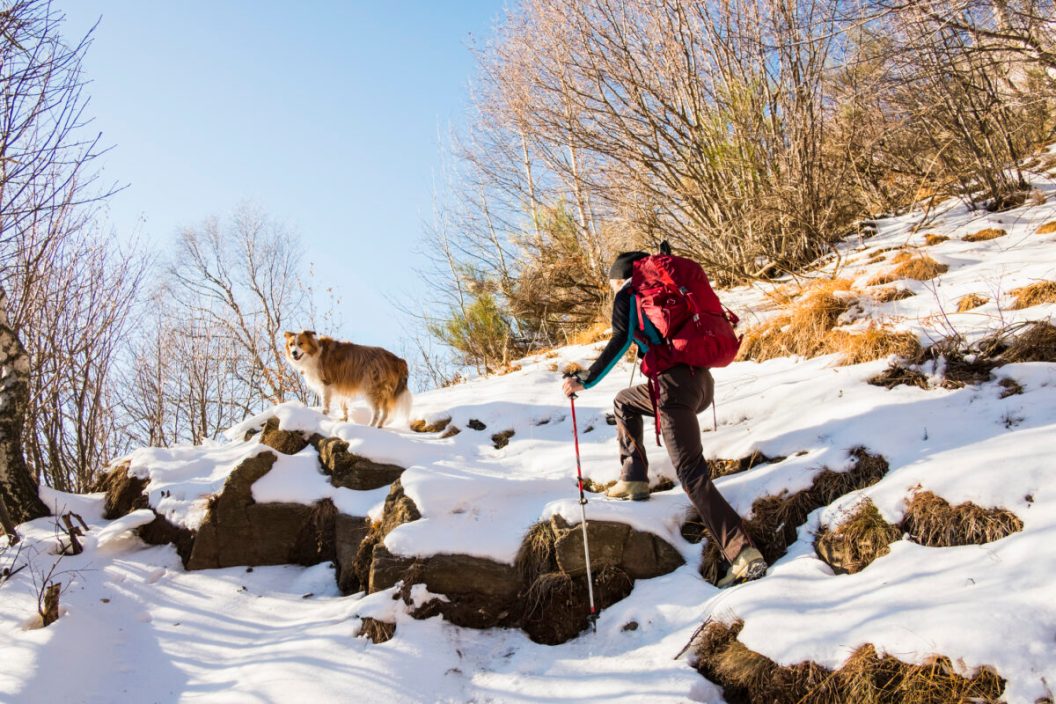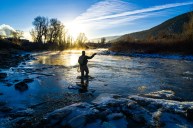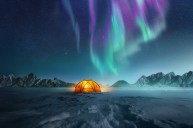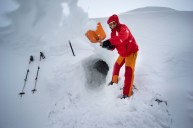Each year, inexperienced and expert hikers alike are injured and even perish while exploring. Climbing any mountain can be treacherous enough — but add in sub-freezing wintry conditions, and the risk of serious problems skyrockets.
The body of a 28-year-old man was just recovered on Christmas morning after the hiker ended up off-trail with a dead phone battery in New Hampshire's White Mountains the night before. Following the incident, the Law Enforcement Division of New Hampshire Fish & Game reminded recreationists to be prepared for severe winter conditions and adhere to the Hiker Responsibility Code. Because incidents like this are all too common — especially in New England.
With so much at stake on any given outing, how can you determine if it's simply too cold to risk it?
Generally, 40 degrees is the typical cutoff temp for both safety and comfort for many recreational hikers, with even more dropping off at the freezing point of 32 degrees. Frostbite and hypothermia can occur quickly when conditions are cold, so it's always best to err on the side of caution — especially if you're newer to hiking.
But a single temperature guideline won't cut it for every hiker and situation. Sometimes a hike in windy spring weather can be riskier than one in calm single-digit winter conditions.
Beyond the temperature, it's important to consider other factors. Will there be 30+ mph gusts of wind or just a light and variable breeze? Will there be any type of precipitation or not a single snowflake or raindrop? Will it be dry and crisp or damp and humid? Will there be sunny, clear skies or mostly cloudy conditions? Rather than just consider the actual air temperature, look at the "feels like" temperature, which can easily be 20 degrees cooler.
How Cold Is Too Cold to Hike In the Winter?
If you're hiking through high, open areas, you might deal with more wind than in lower, wooded valleys. Shade from trees can keep you cooler than the sun beaming down on exposed trails. And cold can often mean slippery ice — and an increased risk of falling.
You should also keep in mind that conditions at the peak can be drastically different than where you begin your hike at the base. Temperatures can plummet as you ascend a mountain and exceed thousands of feet in elevation in a short time. Research the areas you'll be hiking. You can often gain insight from others who have firsthand experience and find accurate current conditions for summits from park pages and other weather-reporting sources.
But no matter what forecasts say, conditions at high altitude can be unpredictable. So, it's important to be equipped and prepared anytime you hike, especially when there's a decent chance of winter weather. If you don't have survival knowledge, the proper gear for cold conditions, and the physical ability to survive sub-freezing temps, it's best to wait for warmer weather. You, and any other people or pets in your hiking group, should be healthy before you head out.
How to Avoid Winter Hiking Dangers
If you do decide to hike in winter weather, it's important to take a few precautions to ensure your safety.
- Tell someone exactly where you'll be going and when you plan to be back.
- Go with at least one other person.
- Take a satellite phone or some other means of communicating with the outside world in case you don't have cell reception.
- You can burn hundreds of calories each hour when it's cold, so bring plenty of snacks to keep your energy up.
- Keep your head and core warm. Wear layers you can shed as needed.
- Take the necessary gear, such as a first aid kit, fire starter, flashlight, knife, hand warmers, etc. so you're equipped for the worst-case scenario.
Hiking in winter can be a lot of fun if you prepare properly. Take a few simple precautions and you will be ready to comfortably hit the trails weeks before other hikers think about lacing up their boots.
NEXT: THE BEST DAY HIKES IN GRAND TETON NATIONAL PARK FOR A LIMITED SCHEDULE




